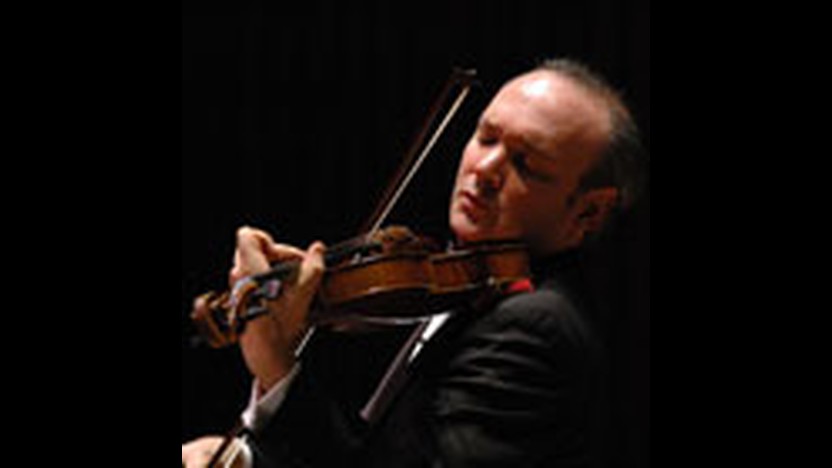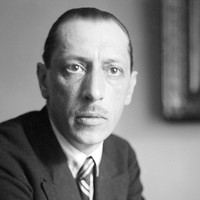Haydn, Stravinsky and Kernis


 Listen to Audio
Listen to Audio
By the time the world warmed up to the primitive force of Igor Stravinsky’s early masterpieces for the Ballets Russes (The Firebird, Petrushka and The Rite of Spring), the composer had already left Russia behind and moved on to more austere subjects and a neoclassical style. One area of sustained focus was ancient Greece and Rome, first in Oedipus Rex (1927) and continuing in the ballets Apollon musagète (1928), Persephone (1934), Orpheus (1947) and Agon (1957).
The commission for Apollon musagète (later shortened to Apollo) came from the American patron Elizabeth Sprague Coolidge, who asked Stravinsky to create a work for the 500-seat theater she had spearheaded at the Library of Congress in Washington, DC. There was room for only a small cast of dancers and musicians, which led Stravinsky to create a scenario for Apollo and three muses (out of the original nine) and a sparse accompaniment of strings. The ballet premiered on April 27, 1928, with choreography by a Ballets Russes alumnus, Adolf Bolm.
In Greek mythology, the god Apollo is associated with light and truth, as well as music and poetry, and the term Apollonian has come to describe art that exhibits order, balance, clarity and precision. When Stravinsky first played a piano transcription for Serge Diaghilev, the impresario behind the Ballets Russes immediately recognized the music’s Apollonian brilliance: “It is, of course, an amazing work, extraordinarily calm and with greater clarity than anything [Stravinsky] has done,” Diaghilev wrote to his partner. “Filigree counterpoint around transparent, clear-cut themes, … music not of this world, but from somewhere above.”
Aaron Grad ©2024

This new concerto for Viola is inspired essentially by its extraordinary soloist whose playing I've known over many years. Paul Neubauer and I first worked together in 1993 when American Public Radio commissioned my Still Movement with Hymn for piano quartet. In some ways this new concerto follows up on the tone of that piece. I have always been drawn to the soulful character of the viola, and have been excited to write this work from the moment Paul requested it. Also, I was extremely moved by Paul's recording (with pianist Anne-Marie McDermott) of viola music of Robert Schumann, and this lead me to re-explore the music of Robert and Clara Schumann in depth once again while writing the concerto.
The opening movement, Braid, is a series of elaborations and embellishments of a sequence of harmonies and melodies. It shifts from clear three-note chords at the opening and closing to a thickening gauze of colors that weave around the viola line and lead, at its peak, to a chaotic frenzy.
The second movement, Romance is a lyrical, romantic intermezzo, which grows out of breathing, fluid gestures and harmonies that link to the Brahms/early Schoenberg tradition. The title came from discovering a number of lovely piano pieces by Clara Schumann titled Romanze, clearly written in mind of her husband.
The final movement, A Song My Mother Taught Me , is the longest and darkest in the concerto (around 16 minutes). Knowing of the Paul Neubauer's interest in folk music, I decided to base this movement on the well-known Yiddish song, Tumbalalaika,which I had first learned in my childhood. I had always felt it have very penetrating words and a sad melody, and was later surprised to hear it sung in many ways – as a romantic wedding song, wildly gyrating dance tune, and even in a ironic, comedic rendition. Later, after hearing the Schumann viola CD, a melody from his Op. 32, No. 4 set of short piano pieces lodged in my ear and would not leave it, so that melody and its distinctive rhythm became the frame of the movement, with Tumbalalaika as its most important musical material. Both melodies have a strong rhythmic kinship with the other.
The concerto begins with plaintive, virtuosic lines in the clarinet and bass clarinet, then the Schumann melody is heard in its simplest form. It returns throughout the movement, and is increasingly deconstructed and harmonically decayed. The use of the Yiddish tune takes the opposite approach – while it is like a theme and series of variations, the ten linked variations start at their most fragmented and least melodic and proceed, clarifying somewhat, towards the tune. Only very late in the movement is the simple, original tune heard, above pulsating strummed chords. The form could be construed to be variations in search of their melody. After the tune is finally heard, a short, intense solo viola cadenza is followed by distinctive climactic moments and increasingly bleak, distant closing sections which end the work.
Aaron Jay Kernis ©2014
 Listen to Audio
Listen to Audio
During his long tenure with the Esterházy family, Franz Joseph Haydn spent much of his time dutifully entertaining his patrons at a remote country estate. He encountered a vastly different environment during his two visits in the 1790s to London, a bustling city that welcomed him as a celebrity. Contrasting the lofty, refined tastes of the Austrian nobility, London audiences favored splashy and spectacular entertainment — ranging from revivals of George Frideric Handel oratorios involving hundreds of performers to popular caricatures such as The Beggar’s Opera. Haydn, in his second set of “London” symphonies, seemed to respond to English tastes by writing music with extra panache. He added the robust tone of clarinets in all but one symphony, and he incorporated flashy gestures that inspired nicknames still associated with several works: Military (Symphony No. 100), The Clock (Symphony No. 101) and Drum Roll (Symphony No. 103).
Haydn began the Symphony No. 101 in Vienna and completed it in London in 1794. Considering the adjustment period new music often endures before being embraced by the public, the immediate success Haydn achieved was remarkable, as evidenced by the review published in the Morning Chronicle two days after the premiere. The critic declared, “As usual the most delicious part of the entertainment was a new grand Overture [Symphony] by HAYDN; the inexhaustible, the wonderful, the sublime HAYDN! The first two movements were encored; and the character that pervaded the whole composition was heartfelt joy. Every new Overture he writes, we fear, till it is heard, he can only repeat himself; and we are every time mistaken.”
As with most of the “London” symphonies, No. 101 begins with a slow introduction. This subdued Adagio builds anticipation for the body of the first movement, which gallops in with five-measure phrases that spill over the expected subdivisions of four measures. The Andante movement, with the “tick-tock” flavor of its accompaniment, is responsible for the symphony’s nickname, The Clock. The graceful melody and steady accompaniment form the basis of a set of variations, including a dramatic, minor-key escapade that recalls Haydn’s Sturm und Drang (“storm and stress”) stylings from an earlier decade.
Haydn deserves credit for making the minuet an indispensable component of the symphony, expanding the structure from earlier three-movement models. This minuet is one of his richest, with a full-throated scoring that includes trumpets and timpani. In the contrasting trio section, a running motive recalls the main theme of the first movement.
The finale packs a typical Haydn punch: it throttles back to just strings in a piano dynamic for the first fifty-five measures, and then unleashes the full forte power of the orchestra right at a major point of arrival, with the last note of the earlier phrase doubling as the first note in a new motive. The same dovetailing trick binds another quiet string passage to an even bolder mood change, with a sudden shift to the minor key blasted by the entire ensemble at a fortissimo dynamic. Later, a hushed fugue volleys among the string sections on the way to a grand arrival, ushering in one last statement of the main theme.
Aaron Grad ©2022
Please note: Roberto Abbado has regretfully had to withdraw from this week’s concerts due to illness. Scott Yoo has graciously agreed to step in and conduct the premiere performances of Aaron Jay Kernis’s Viola Concerto. Stravinsky’s Apollon Musagète and Haydn’s Clock Symphony will be led by concertmaster Steven Copes.
Get driving directions and find nearby parking.
Find dining options close to the venue.
View seating charts to find out where you'll be seating.
SPCO concerts are made possible by audience contributions.
For exclusive discounts, behind-the-scenes info, and more:
Sign up for our email club!
